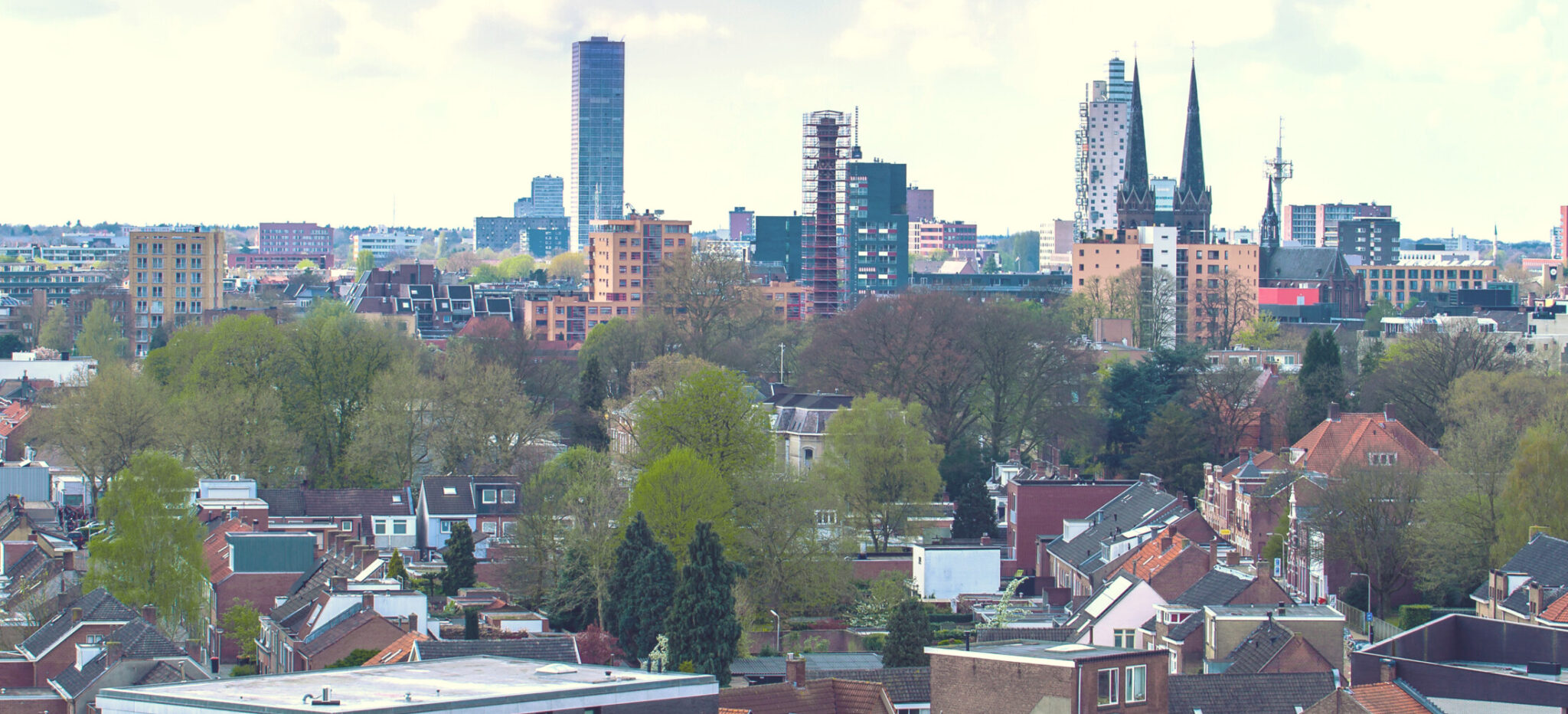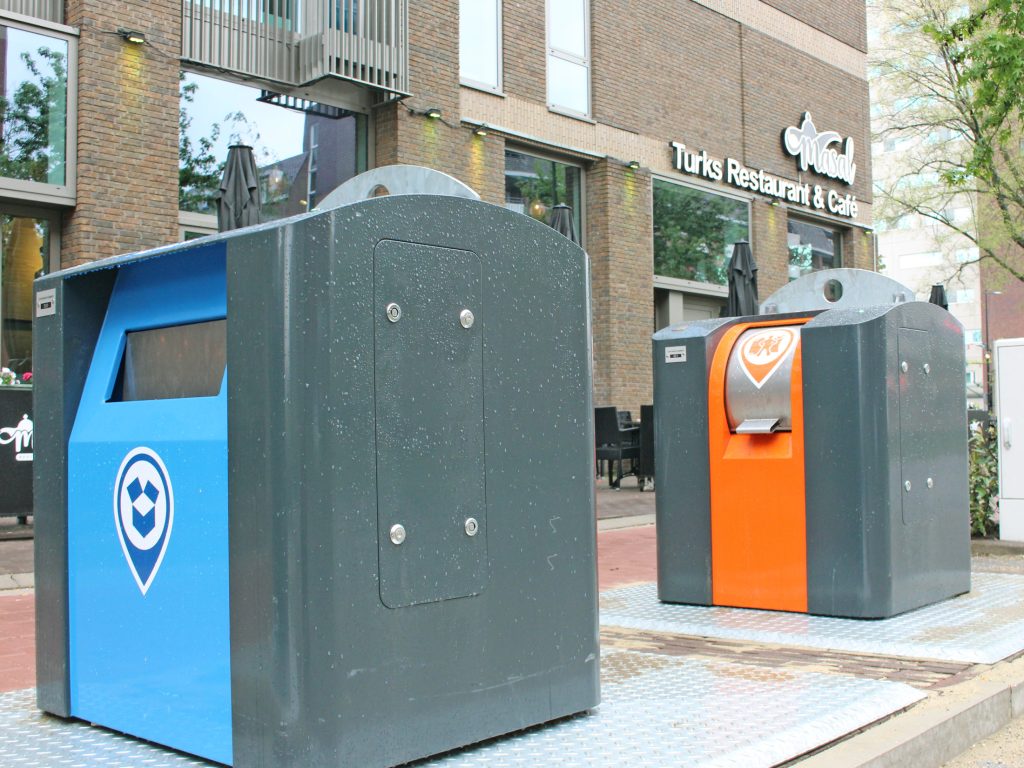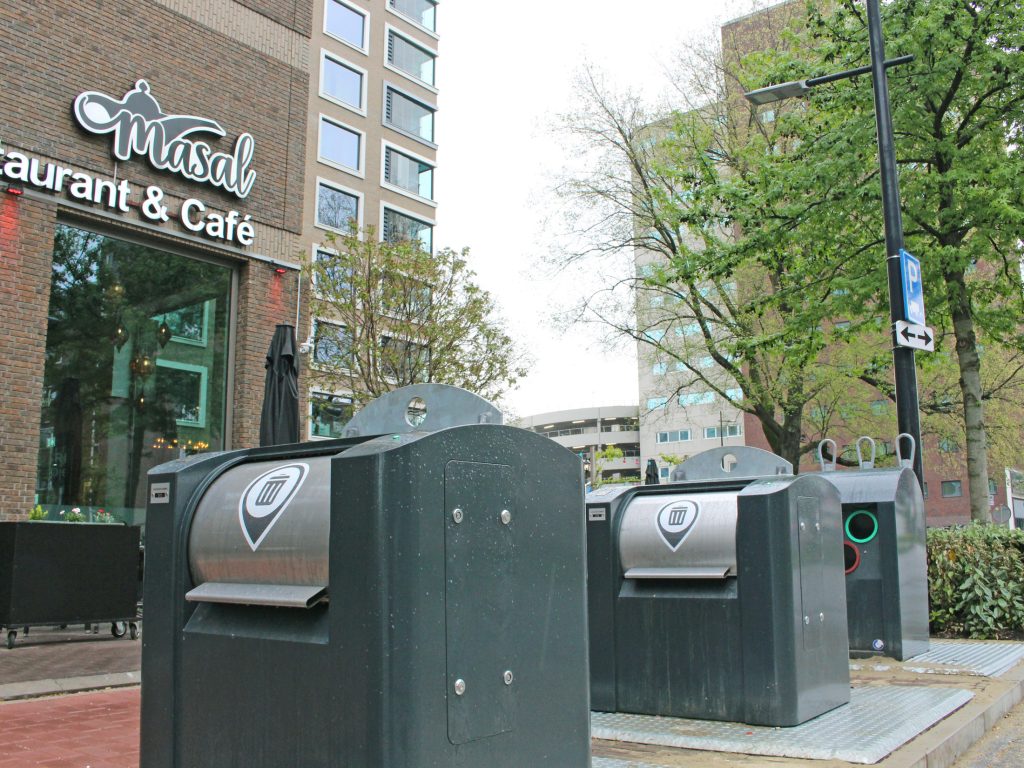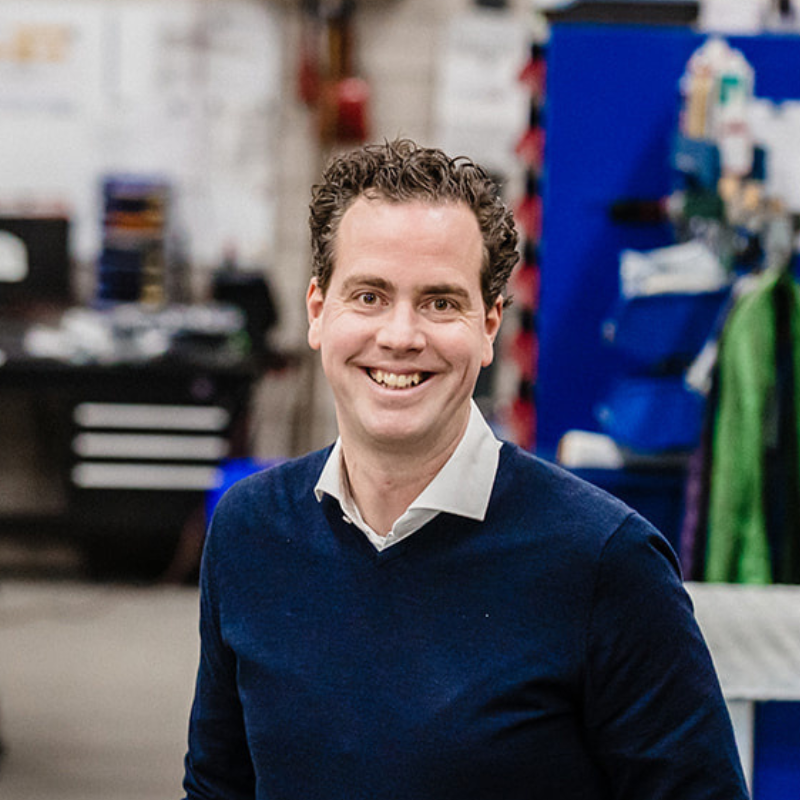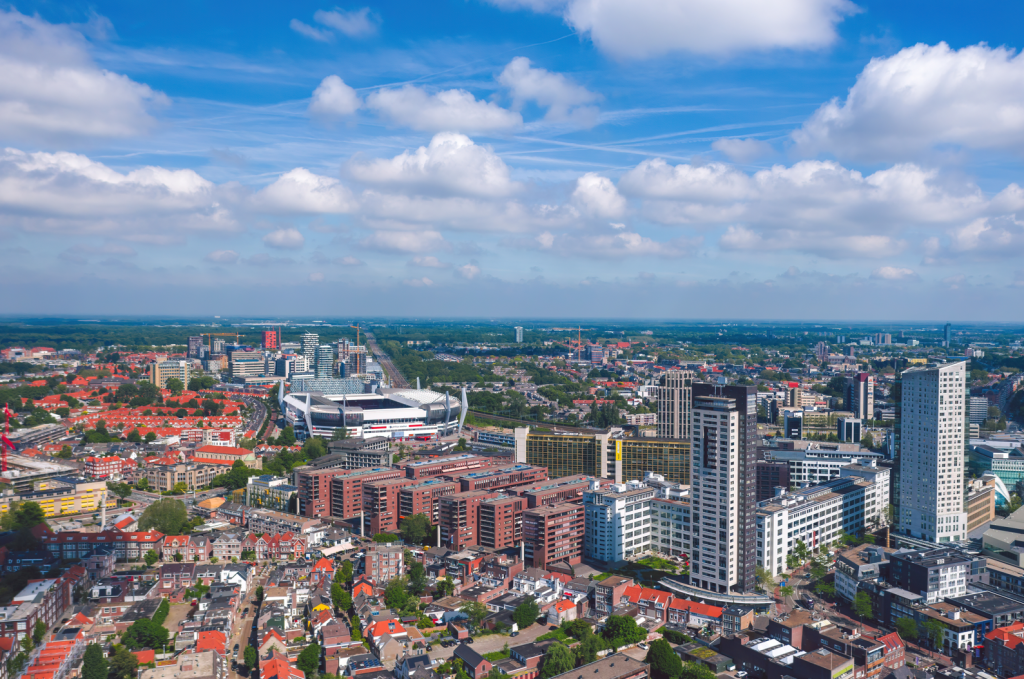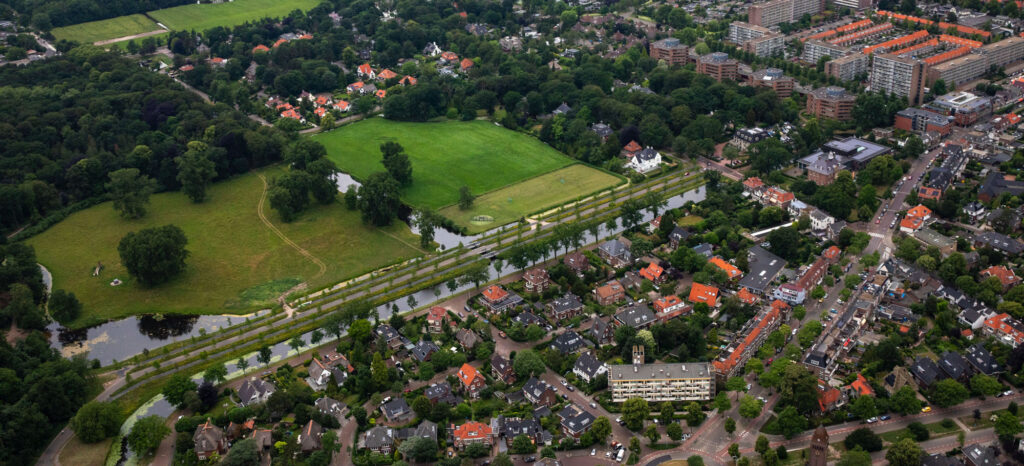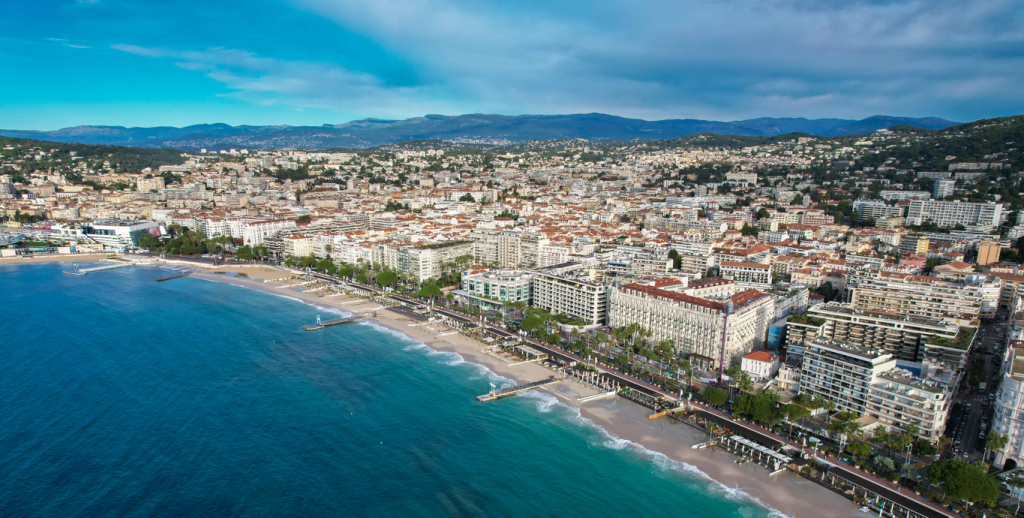In the city of Tilburg, an island with underground compactors is now being used to serve an existing and a soon-to-be-completed apartment block. This concerns a high-rise tower block with 22 floors and 750 apartments.
“30 conventional containers are neither feasible nor desirable”
It is the municipality’s ambition to empty underground containers just once a week. To achieve this goal, the capacity needs to match the means of collection, explains Bob Brocks, Team Leader for purchasing and technology at BAT, the waste management company. “If we collected the waste from 750 households using conventional underground containers, we would need 30 of them. That’s simply not feasible in terms of space, nor is it desirable. Using 2 underground compactors for general waste and 2 more for paper/cardboard, plus 1 other for recyclable plastic, going by the amount of waste involved, it’s possible to empty just once per week.”
